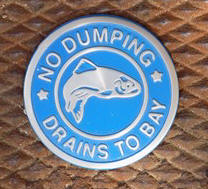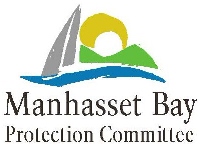Stormwater Management Program NEW - Draft Stormwater Managment Program Plan (Thomaston) - February 2025 NEW - Draft Thomaston 2024 Annual Report - February 2025 ***** Make a request to be placed on the agenda for a Board of Trustees meeting.
To report and illicit discharge or complaints about construction stormwater activities: Contact the Village’s Superintendent of Public Works via phone at (516) 779-3851 or email: clerk@VillageofThomaston.org.
The US EPA’s Non-Point Source (NPS) Outreach Toolbox: The Nutrient Pollution Toolbox: Nutrient Pollution | US EPA University of Connecticut’s General Stormwater Education Library and Specific Pollutant Library: Penn State Stormwater Library: What are Stormwater Pollutants? (psu.edu) Project WET (Water Education Today) materials on water conservation and pollution prevention: Clean and Conserve | Project Wet.
|
|---|
ADDIONAL INFORMATION
Pursuant to a permit obtained from the New York State Department of Environmental Conservation, the Village is implementing a Stormwater Management Program to reduce the impact on our tidal and freshwater wetlands from storm water runoff. A major component of this program is the reduction of pollutants, such as pathogen containing pet wastes, trash, petroleum products, and nutrients and toxics found in lawn care and gardening products from being discarded into or from leaching into the Village’s drainage systems. Also, feeding geese and encouraging them to become “year-around residents” creates a mess on our lawns, athletic fields and golf courses and contributes pollution to our ponds and bays.
To meet the program goals, the Village is asking residents to get involved and help. By being careful with waste disposal, chemical use, cleaning up after our pets and not feeding waterfowl or pigeons, we can reduce the impairments of the receiving waters and improve the aesthetics of the community.
You can help keep our environment clean by:
1.
REPORTING ILLEGAL PUMPING, DUMPING or direct connection
to a drain or waterway to the
2. CLEANING UP AFTER
YOUR PET
Pet waste contains harmful bacteria and organisms that can spread disease. Pick up pet waste; seal it in a plastic bag, and dispose of it in trash cans. Don't hose waste into storm drains. Drains are a direct conduit to our waterways and beaches. Help keep our neighborhood, beaches, and waterways healthy and clean.
While we all love our “feathered friends”, feeding them interrupts the natural migratory cycle. Birds that would normally migrate south in the winter to find food, take up residence if food is “artificially” provided. Further, these resident birds attract migrating birds that in turn will stay if food is present. The result of artificial waterfowl feeding can be large flocks of resident birds that create a nuisance in our parks, athletic fields, golf courses and lawns, and place an extra pollution load on our waterways. Once feeding is discontinued, geese will disperse and revert to higher quality natural foods. Geese that depend on human handouts are also less likely to migrate when severe winter weather arrives, and are more vulnerable to disease.
4.
PROPERLY USING FERTILIZERS and
PESTICIDES ON YOUR LAWN AND GARDEN
If you think you must use heavy amounts of pesticides to grow a beautiful lawn, think again. A bright green, weed-free lawn can be yours by following these simple steps:
· Mow your lawn only as needed. If the grass has gotten too tall, don't mow it down all at one time. Mow gradually, cutting no more than an inch off with the first mowing. Allow the lawn to recover for a day or two, and then trim another inch. Continue cutting an inch at a time until you reach the desired height.
· Water wisely. Don't water on a timer. Some grasses need more water than others, so figure out what kind of grass you have before you decide to water it frequently. When you do water, soak the grass through to the roots, not just the top of the blades.
· Use slow-release, organic fertilizers. Most lawn and garden centers now offer several organic fertilizers along with the more standard varieties.
·
Keep all toxic materials in a locked cabinet or garden shed.
If you must continue to use pesticides on a limited basis, be sure
to remove children and their toys as well as pets from any area where
the chemicals are being stored or used.
5.
DISPOSING OF YOUR GARBAGE PROPERLY and RECYCLING
Garbage should be kept in containers with lids that are animal proof. Open containers or plastic garbage bags provide an inviting target for raccoons and other wildlife. We can keep our garbage from being strewn about the neighborhood and ending up in our waterways by using the right containers. It is important to recycle paper, plastics, glass, and metals. Reusing these materials and keeping them out of our environment is one way to keep our waters clean. Please help by separating paper, glass, plastics and metals and putting them out on the designated day. For information click to view our garbage and recycling webpage.
6. DISPOSING OF YOUR HOUSEHOLD HAZARDOUS WASTES AND RECYCLEABLE USED AUTOMOTIVE PRODUCTS AT A TOWN SITE
The
S.T.O.P. (Stop Throwing Out Pollutants) program offers residents of
The Town of
Under the S.T.O.P. program, the Town will accept
for disposal chemicals such as pesticides, aerosol cans, household
cleaners and used motor oil.
For more information call the Town Solid Waste Authority
(
http://www.northhempstead.com/stopprogram
We can all work together to keep our Village beautiful and our waterways clean.
The Nassau County Soil & Water Conservation District (NCSWD) and the NYS
Department of Envionmental Conservation (NYSDEC)
have produced a new film entitled
"Stormwater Pollution and Green
Infrastructure Solutions"
To learn more about
keeping our environment clean, please visit
www.nassauswcd.org.
Free outreach materials including a trifold brochure, coloring book and
crossword puzzle
are also available to download on the NCSWD site (click the stormwater
tab, then "Stormwater Film Education Packet")
A NOTE ON STORM DRAINS:
As you walk around the Village you may notice storm drains cut into the
curb and meant to remove stormwater quickly from streets and surrounding
areas.
These drains are meant only for rain water and snow melt
(cumulatively stormwater) to move through and are not trash receptacles.
Anything that is poured down or placed into these drains leads to
our beautiful Manhasset Bay or into groundwater.
Do not place pet waste, leftover lawn fertilizer, used oil, food
scraps, trash, or anything else into these storm drains.
Pet waste can be disposed of in your trash; lawn fertilizer can
be swept up and kept to be applied later.
Used oil can often be returned to stores that sell motor oil.
You can also call the Town’s 311 number to inquire about
hazardous material collections going on throughout the year.
Certain food scraps can be composted and the rest can be thrown
out in your regular garbage.
Some of our storm drains are marked with a stainless steel medallion
(like the one pictured below) that says “no dumping, drains to bay” to
serve as a reminder that only rain should go down the drain.
The Village of Thomaston is a member of the Manhasset Bay Protection
Committee, but you may not be fully aware of what the Committee is or what it does.
In 1995, the nine local governments around Hempstead Harbor
formed the first of the “protection committees.”
Two years later, 13 municipalities around Manhasset Bay did the
same (now there are 15 members).
Today, nearly every major harbor or bay along Long Island has
done the same.
The idea was simple:
since pollutants know no boundary and since no one municipality
can solve the water quality issues of the Bay on its own, it made sense
to tackle them together.
Larger municipalities (County and Towns) can bring certain resources to
the table and smaller municipalities (Villages) can help with local
knowledge.
It also made sense economically. Having one
part-time Director to carry out public education; coordinate water
monitoring and beach clean-ups; follow legislation; write and manage
grants;
develop training programs; serve on regional and local advisory
committees; and advise municipalities on new technologies and
developments allowed each municipality to improve water quality at
minimal cost.
This made even
more sense once New York State began mandating many of these activities
under its stormwater permit regulations.
Much progress has been made since the 1990s.
Wetland areas have been restored; harbor trails have been constructed;
waterfront zoning has been implemented in many areas;
and wildlife has
returned including bottlenose dolphins; beluga and humpback whales; bald
eagles; Peregrine falcons; diamondback terrapins; and others.
Still more needs to be done, but we have a
blueprint for success. Our
Village, as well as the Town of North Hempstead and the other 12
Villages in Manhasset Bay’s watershed (the area of land that drains into
the Bay),
recently signed the 2015 Manhasset Bay Protection Committee
Inter-Municipal Agreement, which will keep the Committee functioning and
moving forward for another five years.
For more information on Manhasset Bay and how you can help
protect and preserve it, visit the Committee’s website at
www.manhassetbayprotectioncommittee.org

